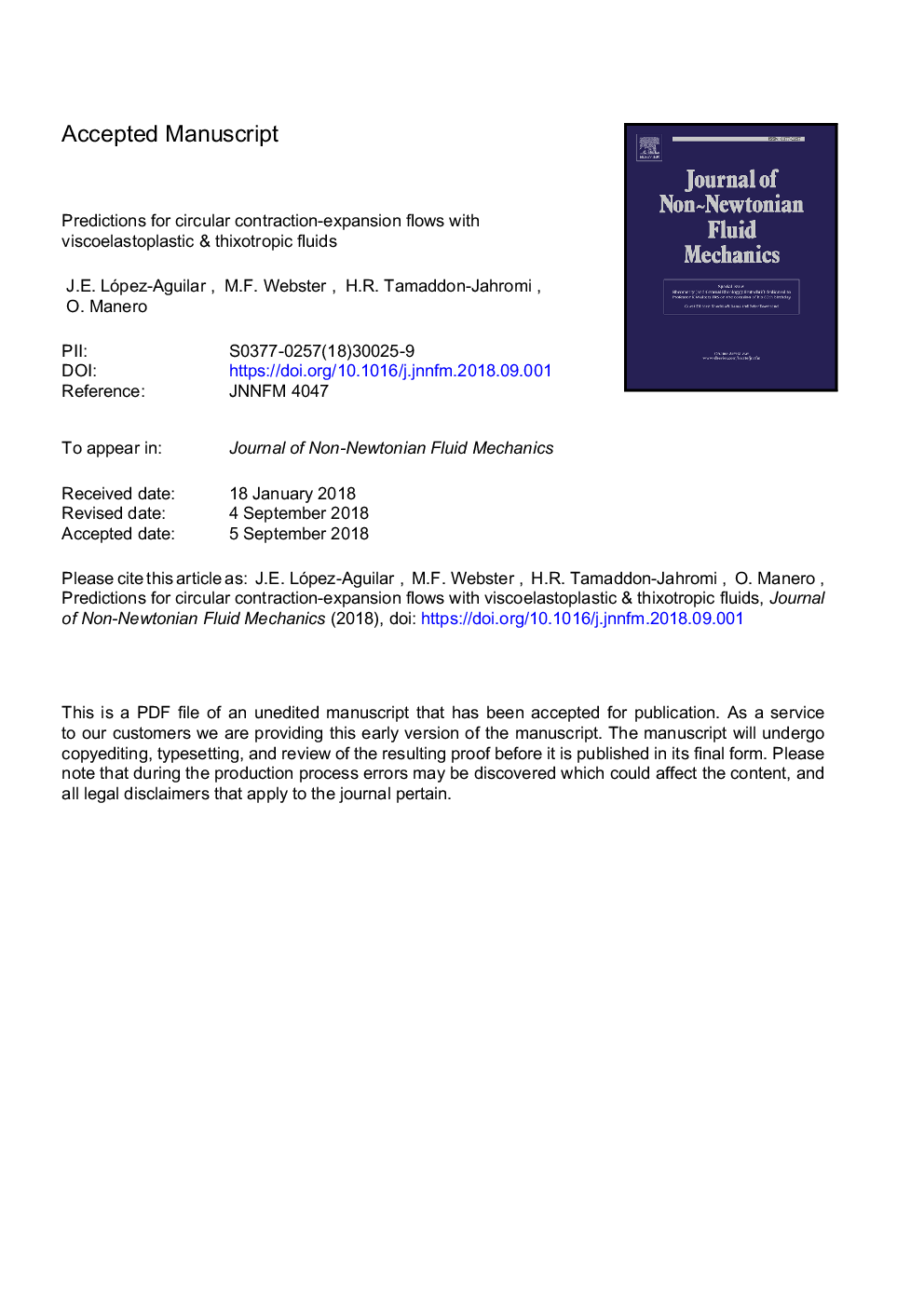| Article ID | Journal | Published Year | Pages | File Type |
|---|---|---|---|---|
| 11003453 | Journal of Non-Newtonian Fluid Mechanics | 2018 | 49 Pages |
Abstract
In this predominately predictive modelling finite volume/element study, a comparative analysis is performed for time-dependent and viscoelastoplastic flow in a circular contraction-expansion geometry of aspect-ratio 10:1:10. For this, a hybrid finite volume/element scheme is employed. A new and revised micellar model is investigated, under the denomination of BMP+_Ïp, which reflects a bounded extensional viscosity response and an N1Shear-upturn at large deformation rates (lost in earlier model-variants), a versatile model capable of supporting plasticity, shear-thinning, strain softening-hardening and shear-banding. Many of these features are common to wormlike micellar and polymer solutions. Then, findings are contrasted against a de Souza Mendes model. Two flow regimes are addressed: plastic flow (low flow-rate Qâ¯â¤â¯1 units, solvent-fraction βâ¯<â¯10â1) and viscoelastic flow (larger-Qâ¯>â¯1; minimised plasticity; βâ¯=â¯1/9); as quantified via flow-structure, yield-fronts and pressure-drops. Under the plastic regime, elasticity-increase causes asymmetry about the contraction-plane, whilst yield-stress and enhanced strain-hardening promote solid-like features, apparent through augmented unyielded-regions and rising pressure-drops. Concerning the viscoelastic regime and vortex-structures, extensional-deformation experienced correlates with hardening expectation in uniaxial-extension, whilst streamline activity in vortex-cells correlates with normal-stress response in shear. Adjustment in strain-hardening/softening response with Q-rise, provides translation from weaker salient-corner vortex centres to stronger elastic corner-vortices; yet, when softening finally prevails, asymmetric upstream/downstream salient-corners vortex patterns are recovered. For strong-hardening and solvent-dominated βâ¼0.8 fluids (as with Boger fluids), an intermediate lip-vortex-formation phase is noted, alongside coexistence of salient-corner vortices. Such a vortex-coexistence phase is distinctly absent in solute-concentrated fluids.
Related Topics
Physical Sciences and Engineering
Chemical Engineering
Fluid Flow and Transfer Processes
Authors
J.E. López-Aguilar, M.F. Webster, H.R. Tamaddon-Jahromi, O. Manero,
